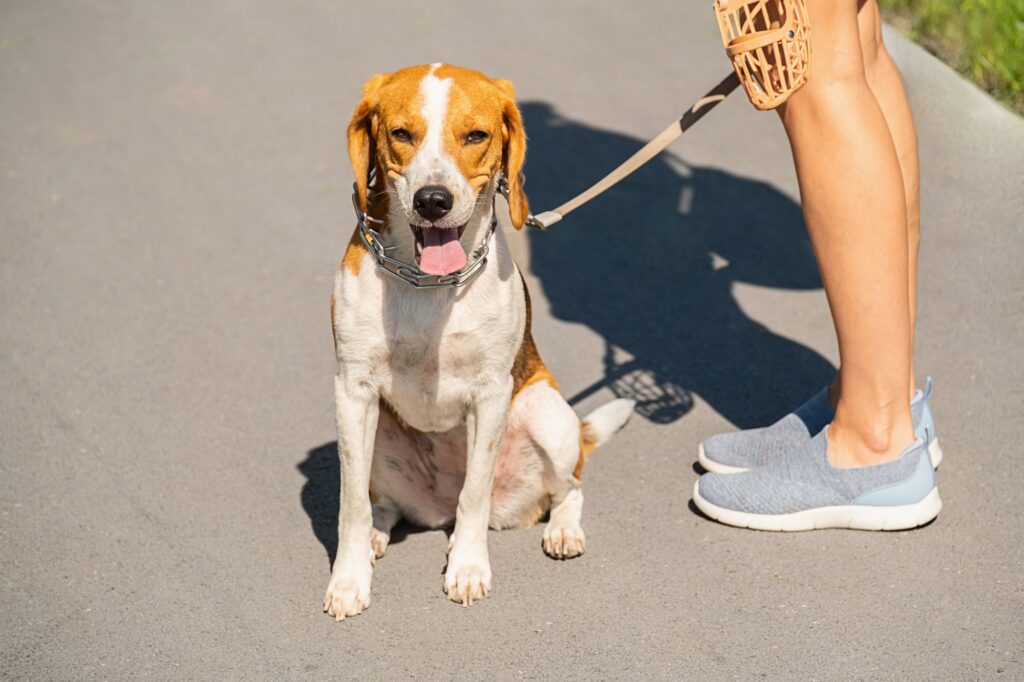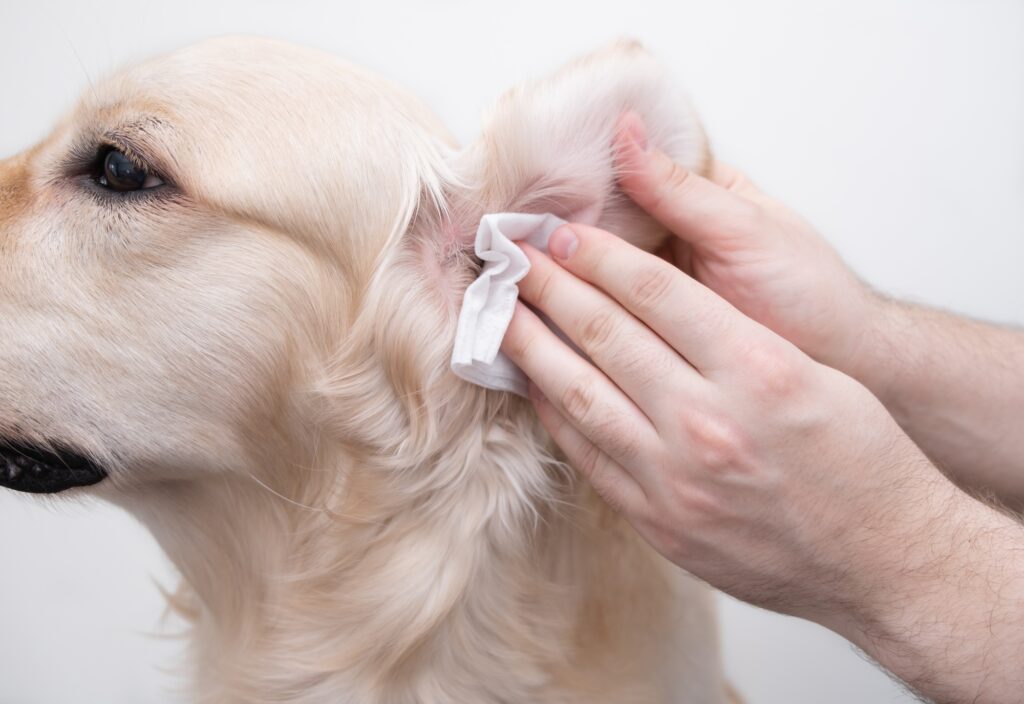Summer is a wonderful time for outdoor adventures with your four-legged friends, but it also brings unique challenges for dog owners. Welcome to our comprehensive guide on summer safety tips for dogs. The rising temperatures, outdoor activities, and seasonal hazards can pose serious risks to your canine friend’s health and wellbeing. From heat stroke to parasites, summer presents various dangers that require vigilance and preparation. We’ll explore essential strategies to keep your dog safe, comfortable, and happy throughout the summer months, ensuring you both enjoy the season to the fullest while avoiding potential health emergencies.
Recognizing the Summer Dangers to Dogs
Understanding and implementing safety tips for dogs is crucial during summer when various dangers can threaten your pet’s wellbeing. As temperatures climb, dogs face numerous risks including heat-related illnesses, parasitic infections, and environmental hazards. Unlike humans who cool down by sweating, dogs primarily rely on panting, which becomes less effective in high heat and humidity. This physiological difference makes them especially vulnerable to overheating. Summer also brings increased exposure to disease-carrying insects, potentially harmful plants, and other outdoor dangers. Being aware of these risks and knowing proper safety tips for dogs is essential for preventing emergencies and keeping your furry companion healthy throughout the warmer months. Let’s examine the most common summer threats to dogs and the warning signs that require immediate attention.
Heat Stroke
Heat stroke is a severe, potentially life-threatening condition that occurs when a dog’s body temperature rises excessively, typically above 104°F (40°C). Dogs primarily cool themselves by panting, which becomes inefficient in high humidity or extreme heat. Breeds with short muzzles (brachycephalic), overweight dogs, elderly pets, and those with underlying health conditions are particularly susceptible. Signs of heat stroke include excessive panting, drooling, bright red gums, weakness, disorientation, vomiting, diarrhea, seizures, and even collapse. Without prompt intervention, heat stroke can lead to organ failure and death. Prevention is crucial and includes providing shade, limiting exercise during peak heat hours, ensuring constant access to fresh water, and never leaving dogs in parked vehicles, where temperatures can rise to deadly levels within minutes.
Parasites
Summer brings a surge in parasitic threats that make understanding safety tips for dogs essential for every pet owner. Fleas, ticks, and mosquitoes thrive in warm weather, posing serious health risks to canines. Ticks can transmit diseases like Lyme disease and Rocky Mountain spotted fever, while mosquitoes carry heartworm disease—a potentially fatal condition affecting the heart and lungs. Fleas cause intense itching and can trigger allergic reactions or transmit tapeworms. Regular application of veterinarian-approved preventatives is one of the important safety tip for dogs during summer months. Additionally, checking your dog for ticks after outdoor activities, reducing standing water where mosquitoes breed, and maintaining a clean living environment can significantly reduce parasite-related health issues. Consult with your veterinarian about the most appropriate preventative regimen based on your dog’s age, health status, and your geographical location.
Grass Awns

Grass awns, also known as foxtails, present a significant summer hazard for dogs, especially those who enjoy outdoor adventures. These small, arrow-shaped grass seed heads have barbed structures designed to burrow forward but not backward, allowing them to easily penetrate a dog’s skin, ears, nose, eyes, or get caught between toes.
Once embedded, grass awns continue to migrate deeper into tissue, potentially causing serious infections, abscesses, or even reaching vital organs if left untreated. Dogs with longer coats or those who frequently explore tall grasses and fields are particularly vulnerable. Signs of grass awn problems include sudden intense licking or chewing at a specific area, head shaking, sneezing, eye discharge, or swelling. Prevention includes regularly checking your dog’s coat after walks, trimming hair between paw pads, avoiding areas with dry grasses during late spring and summer, and promptly removing any grass awns found on your pet’s body.
Hot Cars
Leaving dogs in hot cars is one of the most dangerous situations during summer, making it a critical focus among safety tips for dogs. Even on mild days, temperatures inside a parked vehicle can rise to deadly levels within minutes. On a 70°F (21°C) day, a car’s interior can reach 89°F (32°C) after just 10 minutes and 104°F (40°C) after 30 minutes. When it’s 85°F (29°C) outside, interior temperatures can climb to 119°F (48°C) in the same timeframe. This rapid heat buildup can cause severe heat stroke or death in dogs, regardless of whether windows are cracked open or the car is parked in shade. As part of essential safety tips for dogs, never leave your pet unattended in a vehicle, even for a “quick” errand. If you see a dog trapped in a hot car, contact local authorities immediately, as minutes can make the difference between life and death.
Essential Safety Tips for Dogs During Summer
Implementing safety tips for dogs during summer is essential for protecting your canine companion from the season’s unique challenges. The following comprehensive strategies address the most critical aspects of summer dog care, from preventing heat-related illnesses to ensuring proper hydration. These practical guidelines are designed to help pet owners navigate common summer scenarios while keeping their dogs safe and comfortable. By understanding and applying these safety tips for dogs, you can enjoy summer activities with your pet while minimizing health risks. Each recommendation is based on veterinary expertise and focuses on proactive measures that prevent dangerous situations before they occur. Let’s explore these vital summer safety practices in detail.
Keep them Calm During Summer Celebrations
Summer celebrations like the Fourth of July or neighborhood gatherings often involve loud noises, fireworks, crowds, and unusual activities that can trigger anxiety and stress in dogs. When implementing safety tips for dogs, creating a calm environment during these festivities is essential. Before celebrations begin, ensure your dog has access to a quiet, secure space away from noise and commotion. Consider using anxiety wraps, calming pheromone diffusers, or background noise like fans or soft music to mask startling sounds. For dogs with severe noise phobias, consult your veterinarian about appropriate anti-anxiety medications or supplements. Never take dogs to fireworks displays, as the combination of loud noises, crowds, and unfamiliar surroundings can trigger extreme stress or even cause them to bolt in fear. Keep identification tags updated and consider microchipping as additional precautions, as more pets go missing during summer celebrations than any other time of year. By prioritizing your dog’s emotional wellbeing during these events, you protect their physical safety as well.
Protect their Paw’s From Hot Surfaces
Protecting your dog’s paws from hot surfaces is one of the most crucial safety tips for dogs during summer months. Asphalt, concrete, metal surfaces, and even sand can reach temperatures far exceeding the air temperature—sometimes hot enough to fry an egg. When the air temperature is 85°F (29°C), asphalt can reach a scorching 130°F (54°C), causing severe burns to sensitive paw pads within minutes of exposure.

Unlike humans who wear shoes, dogs’ paws come in direct contact with these surfaces, potentially leading to painful blisters, tissue damage, and even permanent scarring. Test surfaces with the back of your hand before walks—if you can’t hold your hand there comfortably for 7 seconds, it’s too hot for your dog’s paws. Consider walking during cooler morning or evening hours, sticking to grassy or shaded areas, using protective booties designed for dogs, or applying paw wax products that provide a barrier against hot surfaces. Remember that injuries to paw pads can take weeks to heal and may require veterinary treatment, making prevention an essential component of summer pet care.
Keep Your Pet Cool and Hydrated
Keeping your dog cool and hydrated stands as one of the most fundamental safety tips for dogs during summer months. Dogs are particularly susceptible to overheating because they primarily cool themselves by panting rather than sweating like humans. When implementing safety tips for dogs, always ensure access to fresh, clean water both indoors and outdoors—consider adding ice cubes to keep water cooler longer or investing in a recirculating water bowl that maintains freshness. Create cooling stations by providing damp towels on cool surfaces, setting up shade structures in your yard, or using cooling mats designed specifically for pets. For added comfort, consider cooling vests that use evaporation to lower body temperature during outdoor activities. When exercising your dog, choose cooler times of day like early morning or evening, and bring portable water sources for longer outings. Remember that different breeds have varying heat tolerances—brachycephalic (flat-faced) breeds, elderly dogs, puppies, and overweight dogs require extra precautions. Monitoring your dog’s water intake and adjusting cooling strategies based on their specific needs ensures they remain comfortable and safe throughout the summer season.
Know the Signs of Pet Heatstroke and What to do
Recognizing the signs of heatstroke in dogs and knowing how to respond are critical safety tips for dogs during summer months. Heatstroke symptoms include excessive panting, drooling, bright red or pale gums, vomiting, diarrhea, disorientation, seizures, and collapse. If you suspect your dog is suffering from heatstroke, immediate action is essential. First, move your pet to a cool, shaded area immediately. Apply cool (not cold) water to their body, particularly around the neck, armpits, and between the hind legs. Place wet towels on these areas and use a fan to increase air circulation. Offer small amounts of water to drink, but don’t force it. Most importantly, transport your dog to a veterinarian as quickly as possible, even if symptoms appear to improve. Call ahead to alert them of your arrival so they can prepare. The difference between recovery and serious complications often depends on how quickly treatment begins, making this knowledge one of the most vital safety tips for dogs during hot weather. Remember that prevention through proper hydration and avoiding heat exposure is always preferable to emergency treatment.
Stay up to Date with Flea and Tick Treatments
Maintaining current flea and tick preventative treatments is among the most critical safety tips for dogs during summer months when parasite populations explode. These tiny pests don’t just cause discomfort—they can transmit serious diseases including Lyme disease, ehrlichiosis, anaplasmosis, and Rocky Mountain spotted fever. Fleas can trigger severe allergic reactions in sensitive dogs, leading to hot spots, hair loss, and skin infections. Additionally, both parasites can infest your home, creating larger problems that require extensive treatment. Year-round prevention is ideal, but summer demands particular vigilance with consistent application according to your veterinarian’s recommended schedule. Never substitute products without professional guidance, as dog-specific formulations contain precise dosages based on weight and breed considerations. Some treatments combine protection against multiple parasites, including heartworm prevention. Regular preventative application represents a simple yet effective implementation of safety tips for dogs that protects both your pet’s health and your household from parasitic threats during peak season.
Keep Their Ears Dry

Keeping your dog’s ears dry is a vital but often overlooked summer safety measure. After swimming, bathing, or water play, moisture trapped in dogs’ ear canals creates the perfect breeding ground for bacteria and yeast infections. Dogs with floppy ears or hair-filled ear canals are particularly susceptible as their ear structure restricts airflow and natural drying.
These infections cause significant discomfort, manifesting as head shaking, ear scratching, redness, swelling, discharge, and unpleasant odors. Chronic ear infections can lead to permanent hearing damage or require surgical intervention. After water exposure, gently dry the outer ear and ear opening with a soft towel or cotton ball. For dogs who frequently swim or have had previous ear infections, veterinarian-approved ear-drying solutions can help prevent problems. Never insert anything deep into the ear canal, and schedule regular veterinary ear checks during summer months when water activities increase.
Provide Fresh and Clean Water
Providing fresh and clean water is among the most critical safety tips for dogs during summer, as proper hydration directly impacts every bodily function. Dogs require significantly more water during hot weather—approximately one ounce of water per pound of body weight daily, with active dogs or those in extreme heat needing even more. Water quality matters just as much as quantity; bacteria can multiply rapidly in warm water, potentially causing gastrointestinal issues. Change outdoor water frequently, as standing water quickly collects debris, insects, and harmful algae. Consider investing in filtered water bowls or fountains that keep water circulating and cool. When traveling, always bring portable water containers and offer drinks every 1-2 hours. Monitor your dog’s water consumption patterns, as decreased intake could indicate health problems. Dehydration can quickly escalate from mild symptoms like dry gums and lethargy to serious complications including kidney failure. By maintaining constant access to clean, fresh water, you’re implementing one of the most fundamental safety tips for dogs that prevents numerous heat-related emergencies.
Keep an Eye out for Allergies
Monitoring for allergies is a crucial component of summer safety tips for dogs, as environmental triggers peak during warmer months. Dogs can develop allergic reactions to various summer elements including pollen, grass, certain plants, insect bites, and even sunscreen ingredients. Signs of allergies include excessive scratching, licking or chewing at paws or skin, ear infections, red or irritated skin, sneezing, watery eyes, or gastrointestinal upset. Some dogs may develop hot spots—painful, inflamed areas that can quickly worsen without treatment. If you notice these symptoms, consult your veterinarian for proper diagnosis and treatment options, which might include antihistamines, special shampoos, or prescription medications. For dogs with known allergies, minimize exposure to triggers by wiping paws after walks, regular bathing with hypoallergenic shampoos, keeping grass trimmed short, and avoiding walks during peak pollen times. Implementing these preventative measures as part of your summer safety tips for dogs can significantly reduce discomfort and prevent more serious secondary infections that often develop from untreated allergic reactions.
Never Leave Them in a Hot Car
Leaving dogs in hot cars is an absolutely critical safety concern and should never be done, even for brief periods. Even on mild days of 70°F (21°C), a car’s interior can become deadly within minutes, reaching temperatures of 89°F (32°C) in just 10 minutes and continuing to climb rapidly. Cracking windows provides negligible cooling and does not prevent heat stroke.

Dogs have limited ability to cool themselves through panting, which becomes ineffective in enclosed, hot environments. Heat stroke can cause permanent organ damage or death shockingly quickly. If you can’t bring your dog inside at every stop, the safest choice is to leave them at home. For essential summer errands, consider using drive-through services, shopping at pet-friendly establishments, or having someone stay in the running car with proper air conditioning. This single precaution—never leaving a dog unattended in a vehicle—is one of the most important safety tips for dogs that can prevent tragic and entirely avoidable deaths.
Why These Safety Tips for Dogs are so Important
Implementing these safety tips for dogs during summer isn’t merely about convenience—it’s about preserving your canine companion’s health and potentially saving their life. Summer presents unique hazards for dogs that many pet owners underestimate, from rapidly escalating temperatures in cars to scalding pavement temperatures and increased parasite activity. Dogs rely completely on their caregivers to protect them from these dangers, as they cannot verbalize discomfort until symptoms become severe. Heat-related injuries can occur extraordinarily quickly, sometimes causing permanent organ damage or death within minutes of exposure. By consistently applying these safety tips for dogs, you demonstrate responsible pet ownership while ensuring your dog remains healthy, comfortable, and able to enjoy summer activities alongside you. Remember that prevention is always easier and more effective than emergency treatment. Your vigilance in implementing these safety measures doesn’t just enhance your dog’s quality of life—it forms the foundation of the care and protection they depend on you to provide.
